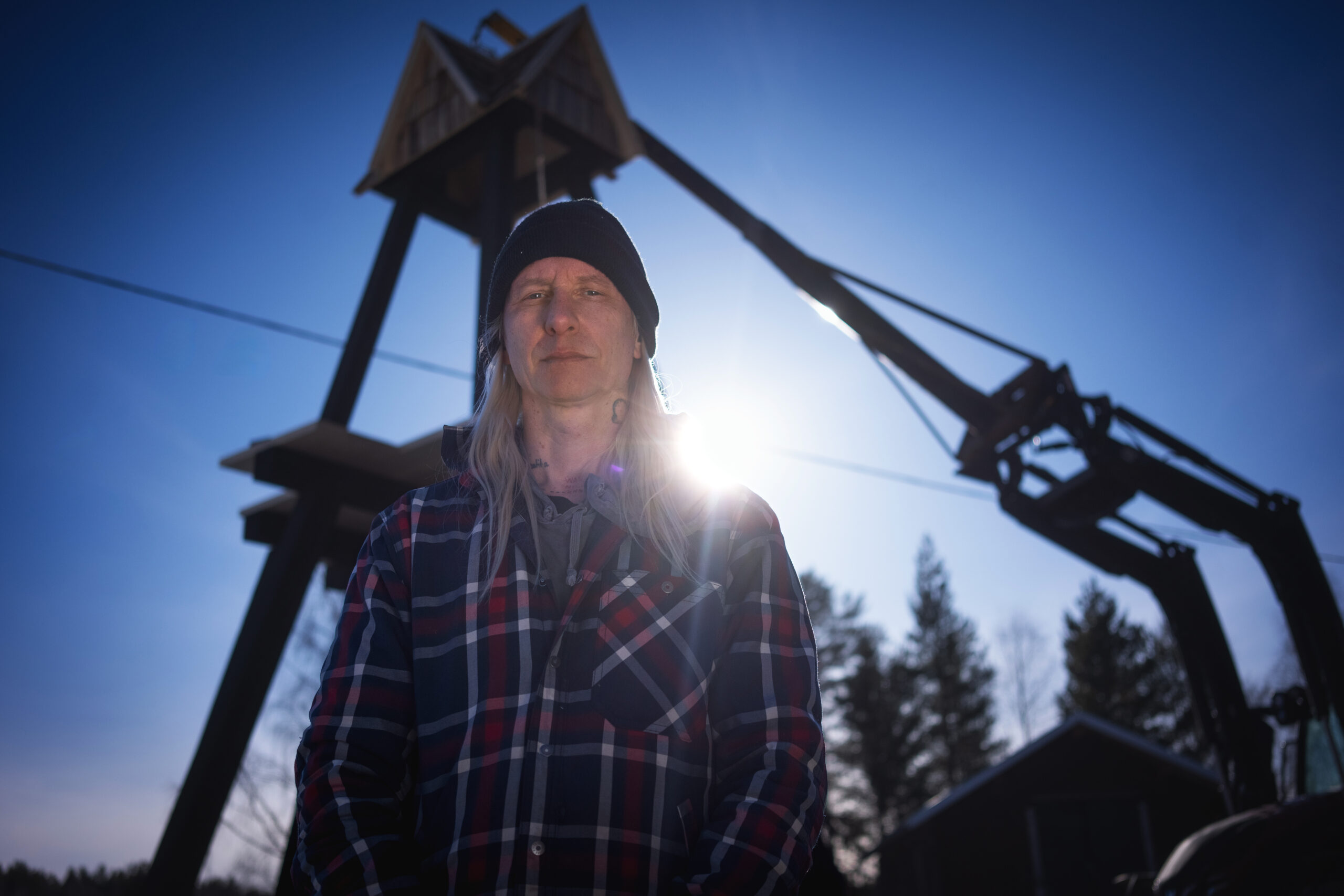Bonniers Konsthall is proud to present Markus Öhrn’s first major exhibition at an art institution. Requiem for Eva-Britt is a collaboration with the group Azdora, initiated in 2015 by Öhrn and its members.
At his grandmother’s deathbed in the Torne Valley, Markus Öhrn asked her if there was anything she regretted – was there anything she would have done differently if she could live her life again? He was expecting an answer along the lines of a wish to have educated herself or travelled more. Instead, Eva-Britt replied that if she had the opportunity to do it all over again, she wished she had dared to be more destructive. That she would have dared to follow her own inner desires and not spent her whole life just being there for others – as a good mother, grandmother or wife. The exhibition Requiem for Eva-Britt is a sanctification of Eva-Britt’s words, and the fruit of a nearly ten-year collaboration between the members in Azdora and Markus Öhrn.
The Azdora project emerged when Öhrn was invited to create a site-specific work for the Santarcangelo Festival a few years after Eva-Britt’s passing. After spending time in the town, he began to notice the similarities between Santarcangelo and his own Torne Valley – it was the older women who seemed to make everything work, seemingly without getting anything in return. With grandmother Eva-Britt’s wish in his heart, he put up posters at markets and pensioners’ dances with an invitation to meet to celebrate l’azdora. Close to sixty women of retirement age showed up. Based on the meeting, a core group of women was formed, who have since worked together, travelled the world and, in ritual forms, explored new aspects of their identities. They have smashed cars, washing machines and groceries, and released a vinyl that has become cult in black metal circles. In 2019, all thirteen azdoras travelled to Eva-Britt’s birth village Niskanpää, where they visited her grave and met her family.
In the world of Öhrn and the Azdoras, the tropes of religion are mixed with elements of black metal, tattoo culture, splatter and smoke machines. Through clothes and attitudes, they combine Öhrn’s artistic imagination with their own fantasies and desires. The subordinate becomes the powerful, where something dark, playful, luminous, brutal and heartfelt emerges.
The heart of the exhibition is a large newly produced work in the form of a six-meter high timbered black bell tower in the main exhibition space. Several times per hour, the bell in the stack rings for the work’s protagonist Eva-Britt. On Sundays, Markus Öhrn and his invited guests give performances in the form of death masses at the top of the tower. On the final weekend, all the azdoras arrive to perform a tattoo ritual in a closing mass in which a selected visitor gets the name of their own azdora tattooed on their body.
Markus Öhrn’s work is often about power shifts, or about creating power out of powerless roles. He often examines and returns to patriarchal structures or societal constraints, but also to a kind of wild and brutal liberation, especially for the female protagonists in his works. The exhibition is about redress, for Eva-Britt and other women – from the grave, across generations and in the present. It is also about opening doors and seeing what happens.
Biography
Markus Öhrn (b.1972 in Malmö, Sweden) is an internationally-acclaimed Swedish director and artist. He received his master’s degree from the Department of Fine Art at Konstfack in 2008. He has mainly practised abroad, at numerous international theatres and festivals, including Festival d’Avignon, Wiener Festwochen and Theatertreffen, as well as the Royal Dramatic Theatre in Stockholm, Sweden. His best-known works include Häusliche Gewalt (Domestic Violence) in 2018, Azdora 2015-2019, and his debut play Conte d’Amour, that won the first prize at the Impulse Theater Festival in Germany in 2011. He has also created several works for Volksbühne Berlin. In 2019, he was awarded the prestigious Austrian Nestroy preis for his work Three Episodes of Life. Since 2018, he has been the artistic director of the theatre group Institutet, located in Vitsaniemi, Övertorneo.
In collaboration with Institutet Vitsaniemi and Italian Cultural Institute in Stockholm.
Images:
1. Death Mass I. Photo: Bonniers Konsthall (Ida Sjödin)
2. The 13 Italian Azdors visiting the artist’s grandmother’s grave in Tornedalen
3-4, 8. Requiem for Eva-Britt, 2024. Photo: Weronika Bela
5. Prolog: Isoäiti tule takaisin (Mormor kom tillbaka). Photo: Weronika Bela
6. Azdora Club. Photo: Ilaria Scarpa
7. Requiem for Eva-Britt, 2024. Photo: Jean-Baptiste Béranger
